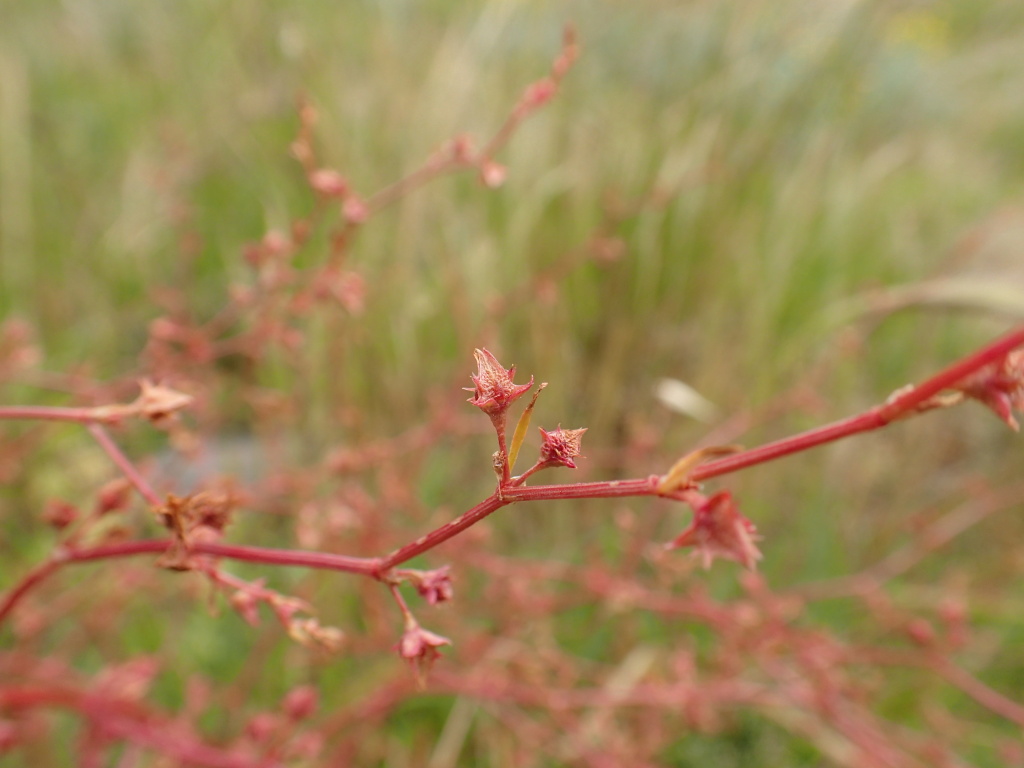Rumex dumosus
A.Cunn. ex Meisn. Wiry DockPerennial with several flexuose, divaricately branched stems to c. 60 cm high, the inflorescence breaking off near base and dispersing as a tumbleweed. Basal leaves with petioles usually longer than lamina; lamina c. oblong, 8–20 cm long, 1–3 cm wide, often slightly dilated in lower part, more or less truncate at base; margins usually irregularly sinuate and finely crisped; leaves within inflorescence sparse, reduced and soon withering. Inflorescence to c. 50 cm long, 40 cm wide; flower 'whorls' mostly 2–8 cm apart, usually only 3–5-flowered. Fruiting valves triangular, 3–5 mm long, 2–3 mm wide (excluding teeth), prominently reticulate, with 2–3 stiff marginal teeth toward base; callosities absent to weakly developed on midrib near base; fruiting pedicel shorter than to c. twice as long as valves (often of different lengths within one 'whorl'), jointed at or below midway. Nut 2.5–3.5 mm long. Flowers Sep.–Jan.
LoM, MuM, Wim, GleP, VVP, VRiv, RobP, MuF, GipP, OtP, Gold, CVU, GGr, DunT, NIS, EGL, EGU, HSF, HNF. Also WA, SA, Qld, NSW, ACT, Tas. Rarely naturalised in Europe from seed inadvertently imported with wool from Australia. Locally fairly common in plains country on heavy clayey soils north and west of Melbourne (e.g. Sydenham, Woorndoo, Echuca, Nathalia, Wangratta), rarer on lake-beds and depressions in mallee country (e.g. Wyperfeld and Hattah-Kulkyne National Parks).
Rumex dumosus var. dumosiformis (Rech. f.) Rech. f. is supposedly distinguished from the typical variety in having at least one of the fruiting valves developing a callosity. As this feature is commonly variable in Rumex, and is only ever weakly developed in R. dumosus, the varieties are not recognized here. See also notes under other species.
Walsh, N.G. (1996). Polygonaceae. In: Walsh, N.G.; Entwisle, T.J., Flora of Victoria Vol. 3, Dicotyledons Winteraceae to Myrtaceae, pp. 272–295. Inkata Press, Melbourne.
 Spinning
Spinning


